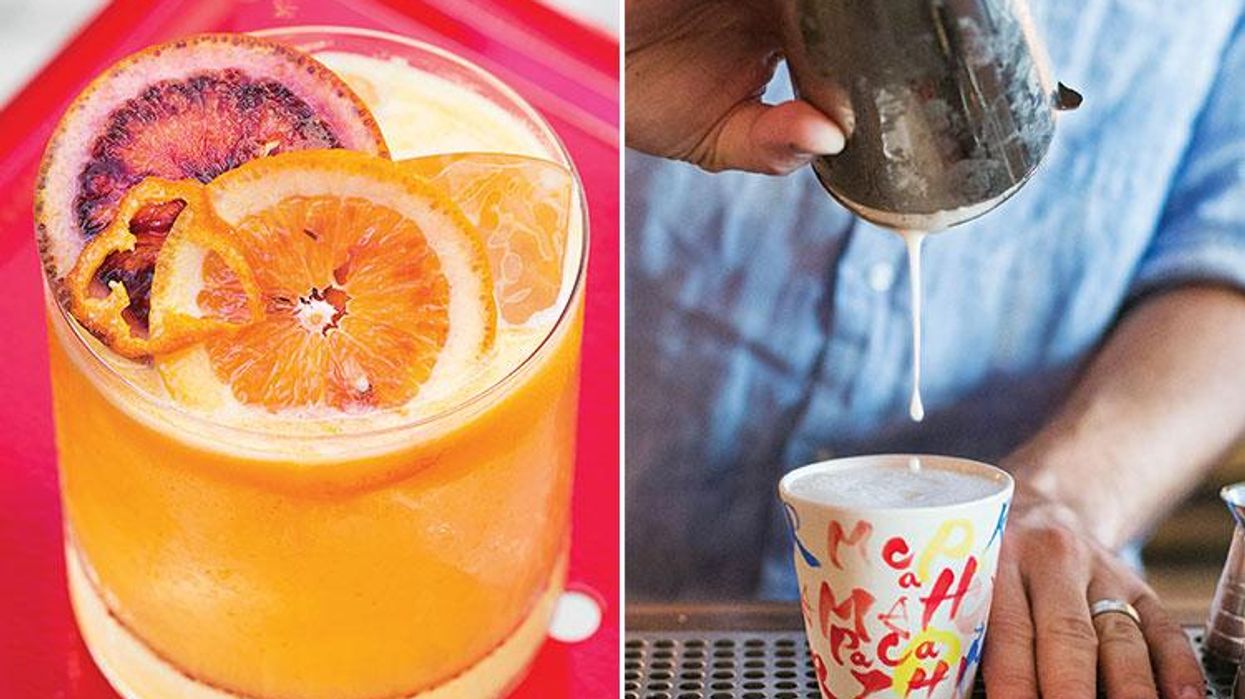Non-topics
Pisco Inferno: How Peruvian Brandy Caught Fire Stateside

The 400-year-old Peruvian drink has captured the imagination of modern mixology.
March 07 2018 2:52 PM EST
By continuing to use our site, you agree to our Privacy Policy and Terms of Use.

The 400-year-old Peruvian drink has captured the imagination of modern mixology.
If you’re a cocktail fan, you’ve probably noticed pisco popping up more and more across drink menus. The Peruvians have been distilling their special grape brandy for 400 years, but only recently has it captured the imagination of modern mixology. And it’s about time. Pisco Punch, arguably its most famous arrangement, was invented in 1850s San Francisco, and while that recipe still holds up today, concoctions made with the spirit have become far more sophisticated.
Zachary Gross directs the beverage program at New York’s Sen Sakana, a new midtown restaurant merging the flavors of Peru and Japan in a style known as Nikkei cuisine. There you’ll find fortified pisco blended with Japanese whiskey and topped with bonito flakes, for maximum umami. “One of my other infusions is pisco with Okinawa black sugar,” Gross says, “what I consider a Nikkei-style rum.” Adding walnut liqueur, tiki bitters, and allspice to the mix, he crafts a savory drink he calls The Island of Nuts.
“I love the heritage and history of pisco, how it’s connected to multiple cultures,” says Jeremy Lake, of Rosaliné in West Hollywood. If you want to sip it neat, he recommends the sweet, subtle Mosto Verde. And when it’s cocktail time, he blends Viejo Tonel, a high-end label distilled from the quebranta grape, with chicha, an earthy fermented corn beverage native to South and Central America. The result, his Chicha cocktail, is pure Peruvian soul, its slight tang cutting the acidic edge of chef Ricardo Zarate’s incomparable ceviches.
It’s no coincidence that pisco pairs so perfectly with gourmet cuisine. “Pisco is distilled with a focus on specific grape varietals and how they’ll be expressed in the different styles being made,” explains Nicole Lebedevitch, the general manager and wine expert at Ruka, a Nikkei “restobar” in Boston. “Each one brings its own acidity, floral/citrus notes, herbal quality, and structure—the same characteristics we look for when choosing wine for a meal.”
The restaurant culture in pisco’s homeland has also helped elevate its stature. In Lima, two of the city’s hottest chefs, Rafael Osterling of El Mercado and Gastón Acurio of Astrid y Gastón, give pisco cocktails starring roles on their menus. In fact, a drink once relegated to shots in cheap bars is now proudly displayed in premier dining spots all over the world. That’s because pisco has all the ingredients that matter: It’s versatile, plays well with food, and tells a story. As Lake puts it, “It’s so fun to introduce a spirit relatively unknown to Americans.” It seems, for now at least, that pisco’s greatest offering might be the sense of discovery it brings—something alluring to the drinker and pourer alike.
Drink This Now
The Pisco Sour, Rebooted
The pisco sour is the most classic, failsafe way to enjoy the spirit of Peru. “It’s the perfect representation of what pisco can do in a cocktail,” says Nicole Lebedevitch of Boston’s Ruka. For her base spirit, she uses the Acholado from BarSol Pisco, a blend of quebrata, italia, and torontel grapes, that’s tart and floral.
2 oz. BarSol Acholado Pisco
.75 oz. split fresh lemon and lime juice
.75 oz. lucuma powder* syrup (1 tsp. of powder to 2 oz. of water)
1 egg white
Angostura bitters to finish
Combine Acholado with egg white, syrup, and lemon and lime juice in a shaker. Shake without ice, then again with ice. Strain into a daiquiri glass to ensure a smooth froth. Garnish with a few drops of Angostura bitters.
*A natural Peruvian sweetener sold in many grocery stores